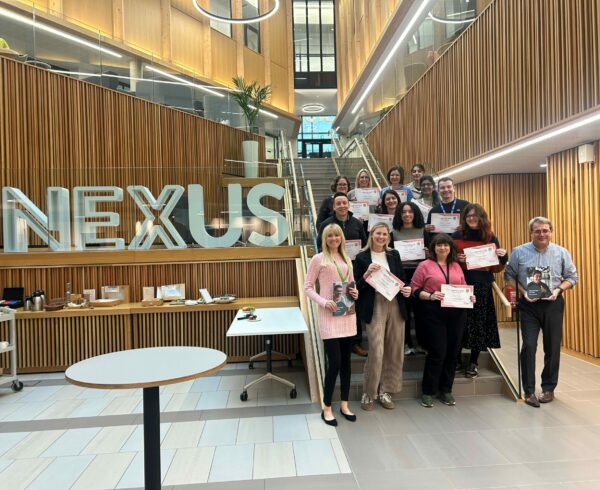The first question to ask before writing a press release is: ‘Does your story have news that would interest others?’ If the answer is no, then hold back until you have a stronger story as this will appeal to more publications and ultimately be ‘News-worthy’.
Then it is important to know the audience that you are writing for – is it a business focused release around growth, investment or a new appointment? These topics are ideal for regional business news and a more localised version should be created for your local media.
Formatting
Keep on brand. Insert your logo into the header and write in your company font. This makes the document more professional and the journalist will know the company it is from without having to read a word. Put the date of the press release underneath your logo, top left, and make it clear it is a press release with ‘Press release’ above your date.
The art of headlines
There is an art to creating a catchy headline to grab the attention of journalists and then readers to see your article through. There are a few things to remember when writing your title:
- Don’t spend too much time on your title. Most journalist will edit and change the title to their own preference, particularly when they know this is a press release which has gone to several publications.
- Don’t give too much away. Your name shouldn’t be included in the title, instead focus on your location and sector having done something impactful e.g. ‘Leeds-based PR firm triples growth’
First line
The very first line of a press release is your hook. Similar to your catchy title, this needs to grab attention and again don’t go into too much detail. Instead of mentioning the name of the business, focus on the location, industry and what the business has done which is impactful, keeping it short, simple and to the point.
Add meat to the bones
From your second line down you need to go into the detail of the who, where, why and how of the news. The main body of text is as important as the title and the hook line and should be checked thoroughly before submission as punctuation and spelling mistakes suggest an unprofessional tone which a journalist will not take seriously.
Add human interest
Always include a quote from a relevant person associated with the news. This is your chance to add what you want readers to understand about your business.
A quote or testimonial adds strength to the piece and adding the human interest element will appeal to readers on a personal level. Remember people buy people, and it is important to showcase the people behind the brand so a quote from the MD of the company and/or the new client/contractor/staff member endorsing the firm and strengthening the company’s brand values is what positive PR is all about.
A picture speaks a thousand words
It is equally key to include a high quality, well shot image alongside your press release. This is important as low quality images can deter a journalist from publishing the article. And a good image is the difference between a full page feature or a lost bit of copy hidden away in the column of a newspaper.
Read our previous blog post on the importance of a strong image here.
Ending
When ending a press release it is good practise to write ‘ends’ allowing the journalist to quickly see the length of the article. After this you should include ‘notes to the editor’ which should include contact details and additional background information about your business, and those mentioned within the press release. In addition to this you should include your business including a website link and social media addresses such as Twitter handles as more and more online journalists like to tag you into news updates on social meida.
The email
Once you are happy that your press release is complete, check, proof-check and get someone else to check too. Ensure you have the relevant email address of the key journalist at the key publication and include the title of the press release in the email subject. Copy and paste the whole document into the email, and attach a copy with a good quality, high resolution image or two. Then it’s time for a final check before sending the email, is it formatted correctly? If so, then it’s time to press send!
The follow up
At MacComms, we’re not huge fans of following up for the sake of it. Journalists are increasingly limited with time and bombarding them with a barrage of emails and phone calls is likely to negatively impact upon your relationship with them, rather than secure you that extra coverage. However, if you think the piece is really newsworthy and haven’t seen it picked up as yet, a gentle follow-up email the week later, and no more than one phone call shortly after that should enable you to give them a gentle reminder, advise of future news stories in the pipeline and gain feedback.
Want help writing your press release? Contact us to discuss today.








